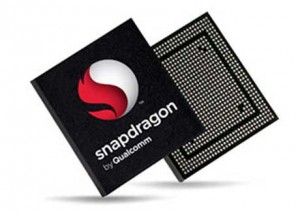 Qualcomm is preparing a quad-core version of its Snapdragon S4 chip for thin and light Windows 8 laptops, which the chip maker hopes will steal some thunder from Intel’s second wave of ultrabooks due later this year.
Qualcomm is preparing a quad-core version of its Snapdragon S4 chip for thin and light Windows 8 laptops, which the chip maker hopes will steal some thunder from Intel’s second wave of ultrabooks due later this year.
The S4 chips will go into laptops that are thinner and lighter than Apple’s MacBook Air or today’s ultrabooks, according to Rob Chandhok, senior vice president at Qualcomm. Ultrabooks are being promoted by Intel as a new category of thin and light laptops.
“We think much lighter than what Intel calls an ultrabook,” Chandhok said.
The lines between high-end smartphones, where Qualcomm’s chips are normally found, and laptops has started to blur, Chandhok said. The S4 chips will enable smaller laptops with high-resolution screens, longer battery life and always-on connectivity, he said.
The chips are based on a core from U.K. chip design company ARM, and include an integrated modem and a graphics core capable of handling 3D graphics.
Just as Intel hopes to make microprocessors for smartphones, Qualcomm is trying to expand out of the smartphone market and into PCs. It has already shipped some prototype Windows 8 PCs with Snapdragon chips to developers. But Intel is moving against the ARM-based vendors by pouring millions of dollars into developing ultrabooks.
Qualcomm hopes Snapdragon laptops will be differentiated by their 4G connectivity and strong multimedia qualities, Chandhok said.
The S4 will be manufactured with a 28-nanometer process, improving power efficiency and performance compared to earlier Snapdragon chips, Chandhok said. While ARM chips often provide longer battery life, they generally pack less performance than Intel’s Core processors.
Qualcomm is also thinking about 64-bit support on Snapdragon, but Chandhok couldn’t reveal when such a chip would be released. Windows 8 will be a 64-bit OS, and ARM has already announced 64-bit support with its upcoming ARMv8 architecture.
Having a powerful Snapdragon chip with four CPU cores and multiple graphics cores will make a difference for Windows 8 devices, especially for applications like games, Chandhok said. Windows 8 can improve application performance by executing programs in parallel across multiple cores, and Qualcomm is working on compilers to parallelize program execution for everyday applications like browsers.
“There will be maturation on the software,” Chandhok said.
Aside from makers of x86 chips, Qualcomm will compete with ARM-based chip makers Nvidia and Texas Instruments, which are also supplying chips for Windows 8 tablets. While many basic features will be similar, Qualcomm will try to differentiate its chips by developing software that plays to unique multimedia and cellular connectivity features on Snapdragon.
“In this day and age, the instruction set matters,” Chandhok said.





